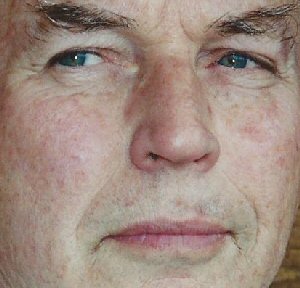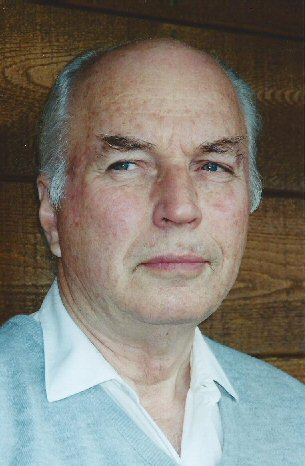Kenneth Radford Shoulders, 86

July 10, 2013 – By Steven B. Krivit –
Ken Shoulders died June 7 from a subarachnoid hemorrhage, a complication of metastatic prostate cancer. He was 86.
Shoulders is survived by his wife, Claire, daughters Diane Meade and Lee Shoulders, son Steven Shoulders and granddaughters Madeline and Hannah. New Energy Times spoke with his daughter, Diane Meade, on July 9 and confirmed the death. She provided the following statement:
“Ken’s brilliance will be missed in the scientific community as a visionary in the field of new-energy exotic vacuum objects (EVOs). He was a leader in this new frontier but perhaps best-known to the scientific community as the father of vacuum microelectronics.
“Ken was also greatly admired for his earlier work for SRI International, resulting in many patents. Other inventions that were based on Ken’s designs were the first commercially available quadrupole mass spectrometers he built, which were developed by Finnigan Instruments. Ken built the first quadrupole mass spectrometers in 1958 while working at SRI.
“Other areas of devotion to science included vertical flight technology, which remained an unfinished passion at his death. Ken will be greatly missed, but his ground-breaking work in new energy will be built on and come to pass when the rest of the world catches up to his vision. Memorial services will be held privately.”

Ken Shoulders
Shoulders was an independent-thinking genius who only finished high school but who had a flare for thinking outside the box, Meade told New Energy Times.
“His development of the quadrupole mass spectrometer was just the tip of the iceberg,” Meade said.
John Markoff wrote about Shoulders in his book What the Dormouse Said: How the Sixties Counterculture Shaped the Personal Computer Industry.
“[He was] an unschooled scientific genius … who bubbled with wild ideas at an astounding rate,” Markoff wrote. “Before coming to SRI, he had worked at MIT as a technician. Sometime later, he was informally voted the SRI researcher most likely to build a perpetual-motion machine.”
An article in Infinite Energy discussed some of his work with “charge clusters.” In a September 2010 video interview with inventor John Hutchinson, Shoulders spoke about the inherent conflict between exploratory science and academic science.
“That’s all you’re doing, piecing together things that you can look up [in academic science],” Shoulders said. “John [Hutchinson] is working on something you can’t look up! You can’t piece it together. You can’t find the parts [in books.]
“That’s the kind of stuff I worked on, and I knew the rule, ‘You guys are wrong; you cannot get the kind of answers you want doing things the way you do them.’ And why [do they say that]? They’re afraid of losing their academic connections.
“What we have to do to make progress in our field is to be very non-academic. Anyone that’s in [frontier] science, anyone that’s out there, in exploratory science, if you will, cannot tolerate rules of academia. They will perish; they won’t find anything of value. It’s so easy not to find stuff, and you’ll never even know what you didn’t find.”
Shoulders worked in some of the most exciting uncharted territories, including novel flight mechanisms as well as remote viewing research sponsored by the CIA. At one time, Shoulders states in the video, he was discussing possible research collaboration with Prince Hans-Adam II of Liechtenstein.
Shoulders had a 4,000-square-foot laboratory, a fully equipped machine shop, and two trailers full of scientific equipment, some of it custom-built.
“The lab ended up being bigger than the house,” Meade wrote. “It was beautiful; he could build things that Lawrence Livermore laboratory couldn’t.”
Meade and her brother are liquidating most of it, and the equipment has been packed into 36 large crates. Interested parties may send an e-mail to New Energy Times, and we will forward it to the family.
Questions? Comments? Submit a Letter to the Editor.

